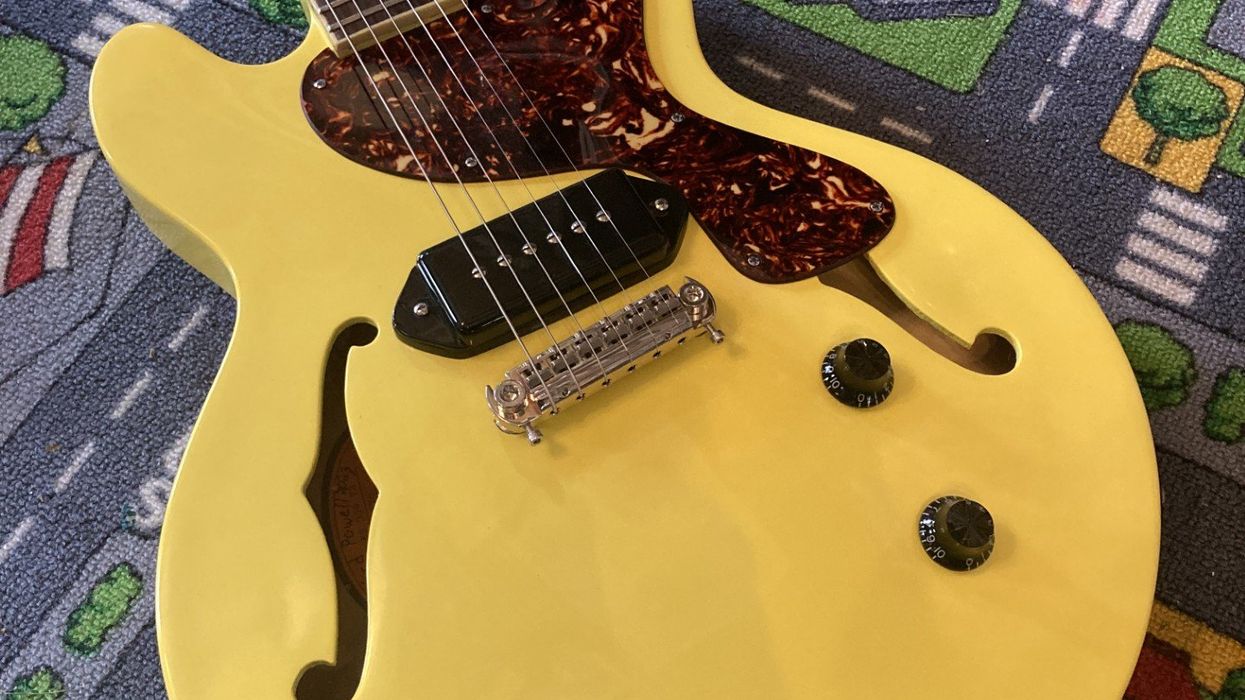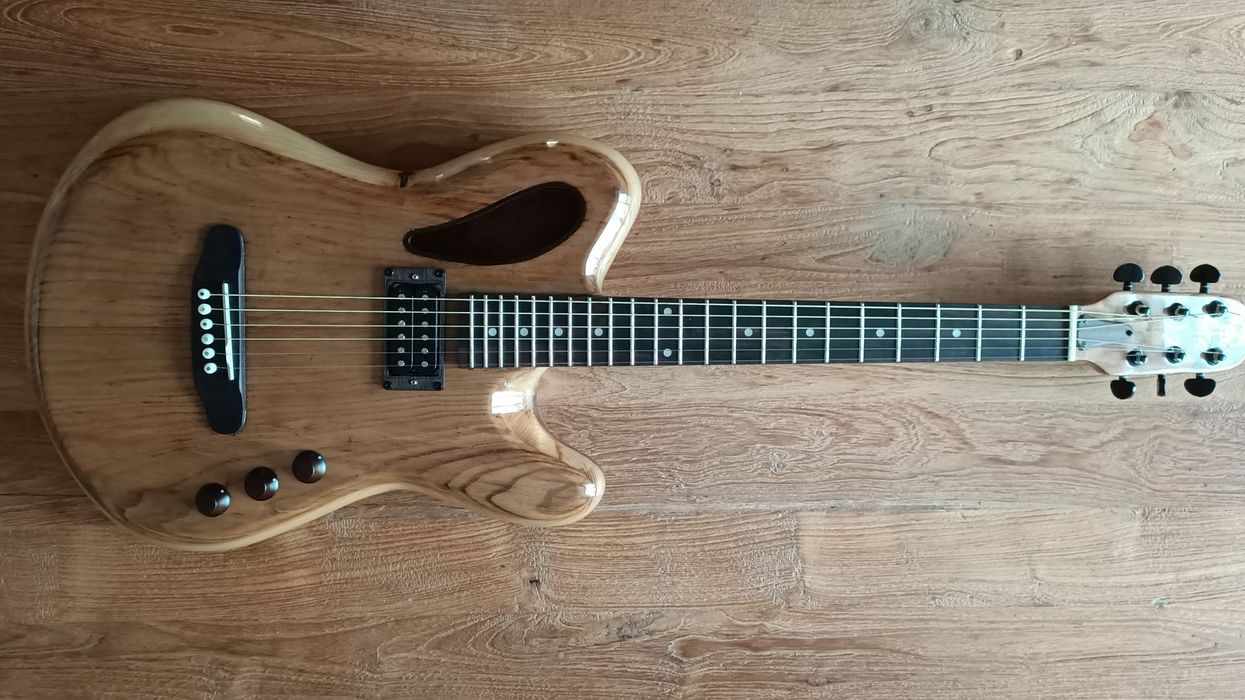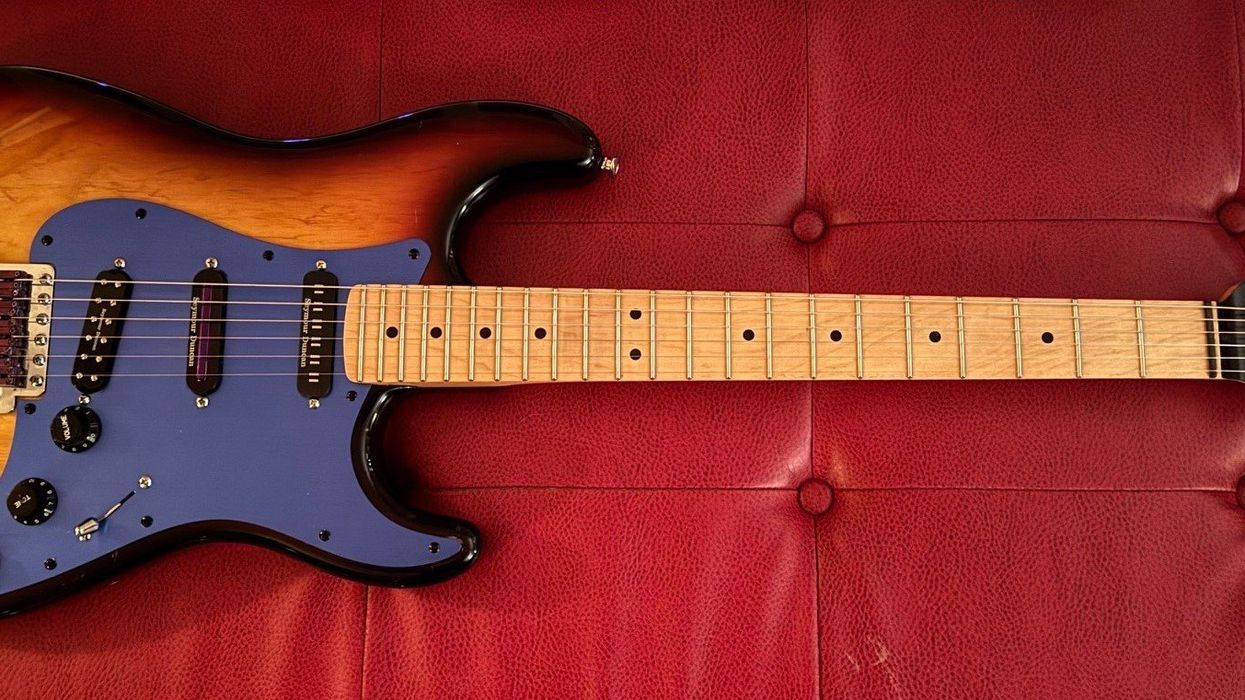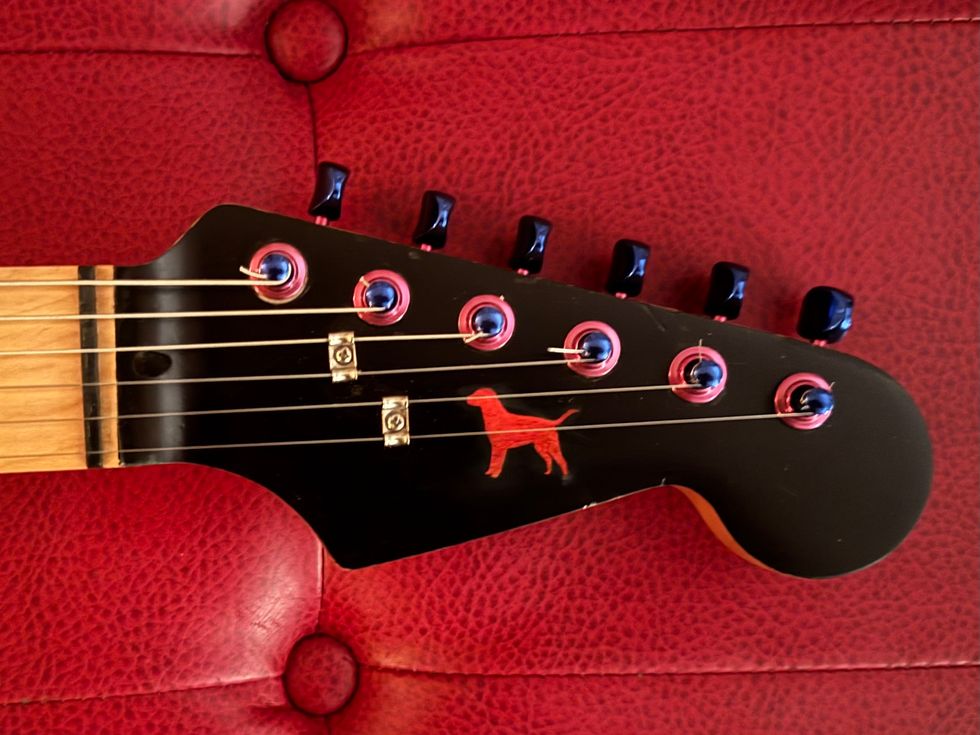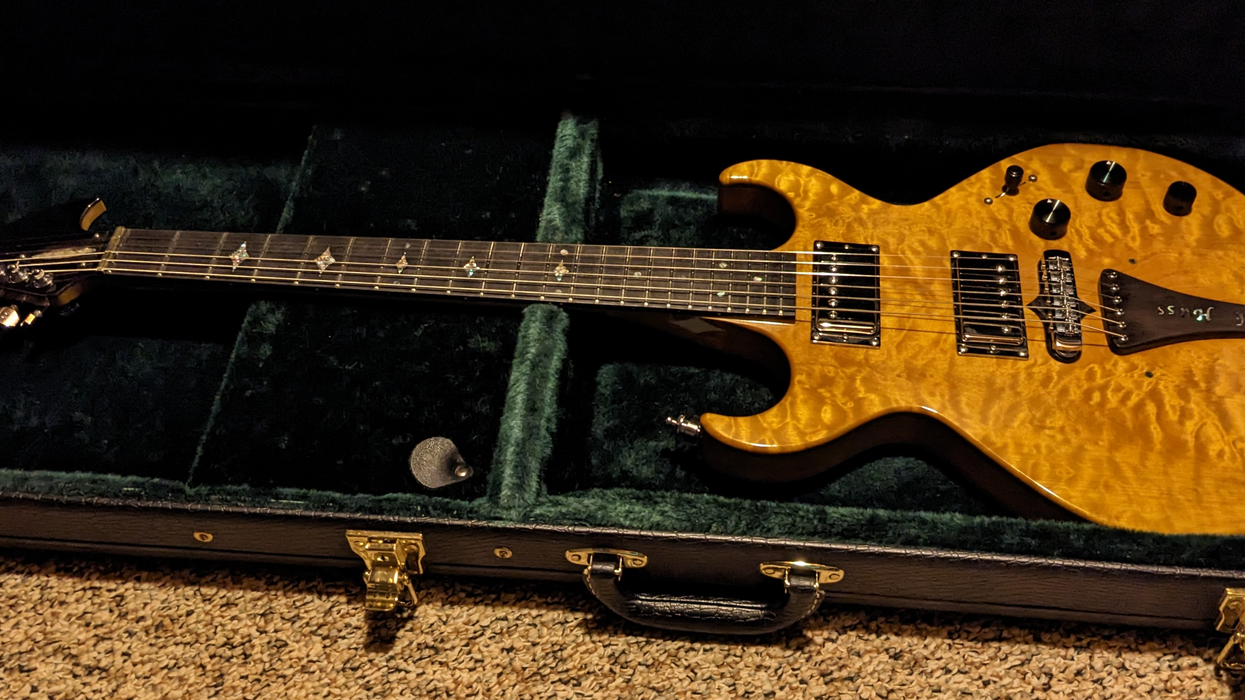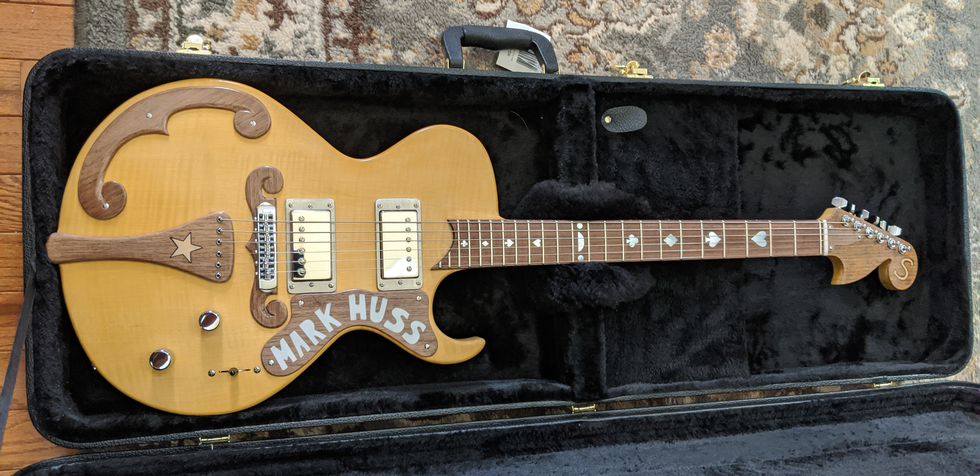This guitar began a year ago as a concept to make a guitar with a luthier friend who was going to be moving away. So, I had a time constraint. He and I would frequently go mountain biking, design and build biking trails, and played in a band together—until, eight years ago, I started to have chronic health problems, which forced me to quit all of those activities.
A collaboration at my friend’s well-equipped workshop was nixed immediately, mainly due to my health, but also because his free time became limited, since his schedule was occupied with his full-time job and his project of building a house. As a result, the teamwork/consulting was going to have to take place via email.
My friend started me off with a very nice neck-blank sandwich of walnut and maple (from a tree that fell across one of our mountain-bike trails—bonus!) and a severely warped neck that was the donor for the fretboard and truss rod.
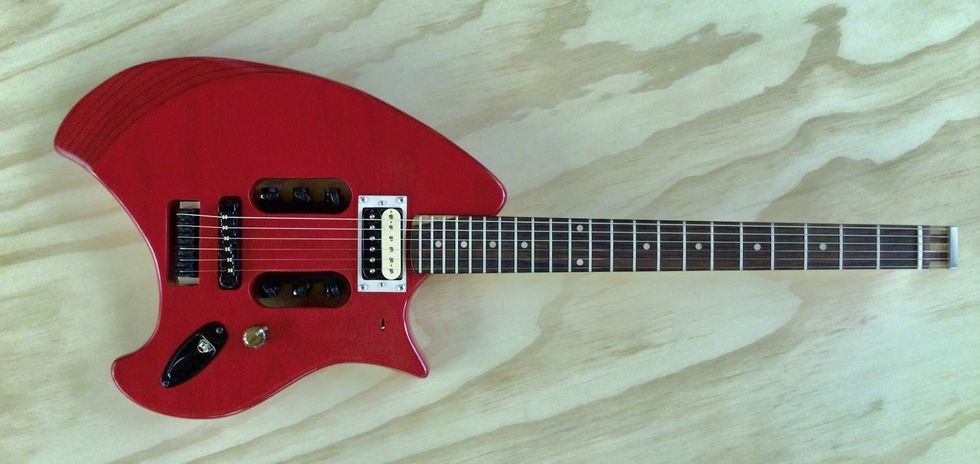
Ready for some headless hammer-ons.
I planned to copy a Traveler Ultra-Light Edge, which has an ingeniously designed tuning configuration and two-layer plywood body. But, by the time I finished carving the neck, I had decided that I would not be happy with a guitar body as small as the Traveler. I needed something more shapely and comfortable. The Ovation Breadwinner/Deacon shape won over a Klein Headless or Abasi Larada, both close runners-up.
The body took much longer to make than I anticipated. The in-body tuner arrangement is ideal for CNC fabrication, but it required a lot of planning and skill to make by hand. The body consists of two ¾″-thick pieces of plywood, so it was very convenient to chamber the insides before gluing them together. I mixed my own wipe-on polyurethane and added artist oil paint for a translucent tint. The finish was delayed by a month of frustration with inferior solvents due to new state VOC (Volatile Organic Compound) laws. My health limits my driving to only a few miles at a time, so I had to wait a couple of weeks until an anonymous helper could do a “moonshiner run” to a neighboring state for the good stuff (cue “Red Barchetta,” or more like “Blue Honda Fit!”).
“The body is lightweight, resonant, well-balanced, and very comfortable in both casual and classical playing positions.”
The circuit consists of a volume pot with a treble-bleed filter and a flush-mounted toggle switch for selecting single-, series-, or parallel-coils. The bare aluminum pieces (string-anchor headpiece, humbucker surround, string-roller mounts, and engine-turned neck plate and cavity covers) were made by hand using aluminum scraps. The volume knob is aluminum and zebra wood.
I am very happy with the result. The body is lightweight, resonant, well-balanced, and very comfortable in both casual and classical playing positions. It sounds great, and I love the translucent red color that accentuates the plywood contours. Although I didn’t get to make sawdust with my friend, he gave me plenty of advice during the process, and the neck is made from materials that he contributed, so I consider that a success.
Submit your guitar story at premierguitar.com/reader-guitar-of-the-month
If your story is chosen, you'll also receive a $100 virtual gift card from Allparts, the industry’s leading supplier of guitar and bass parts! All entrants will receive a 20-percent-off coupon to allparts.com.
Please note that the coupon cannot be combined with other promotions.
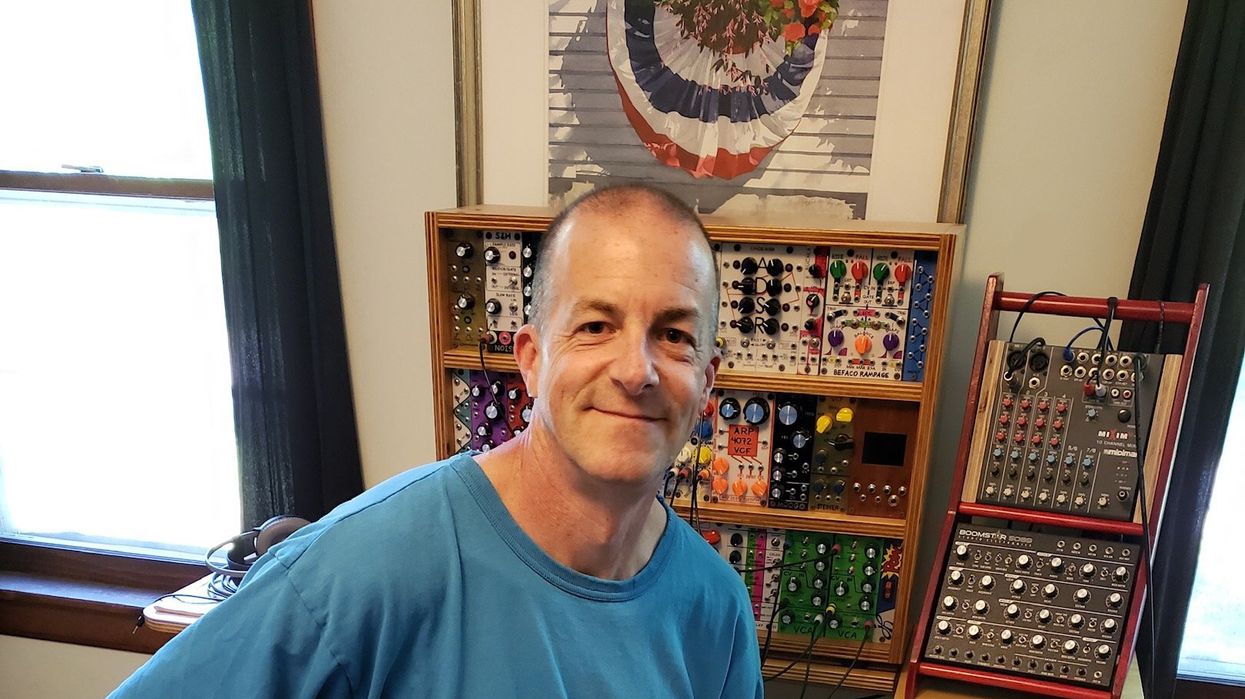


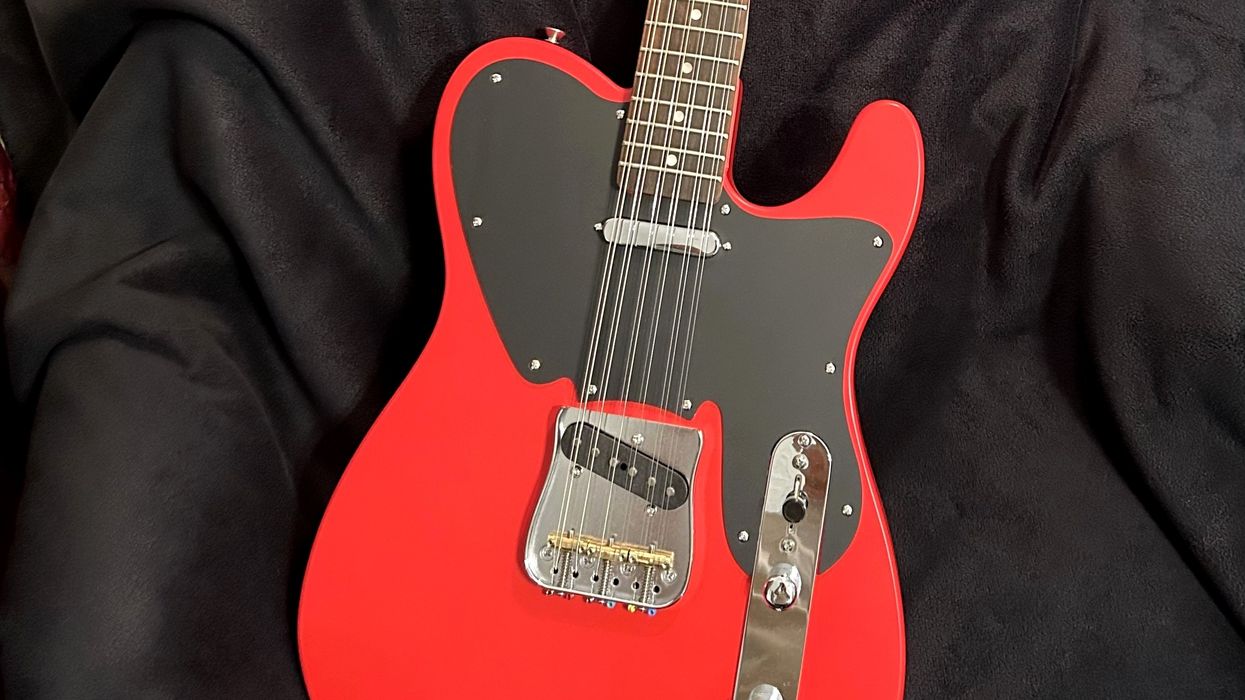

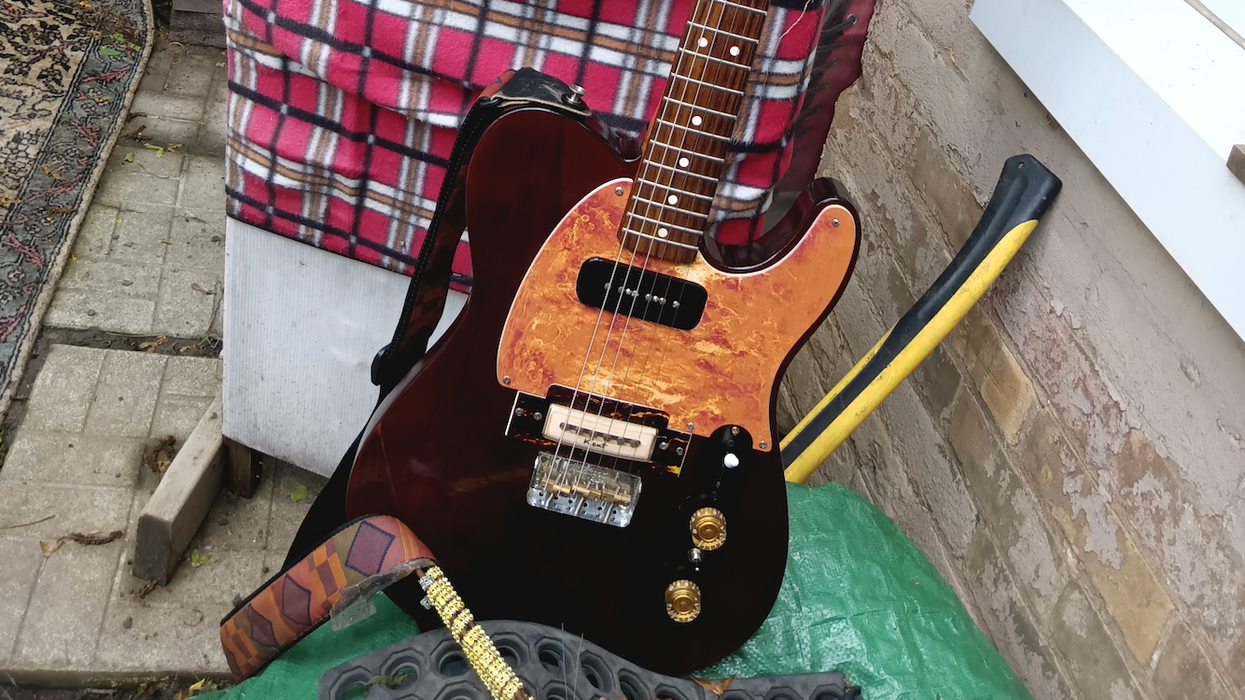
![Devon Eisenbarger [Katy Perry] Rig Rundown](https://www.premierguitar.com/media-library/youtube.jpg?id=61774583&width=1245&height=700&quality=70&coordinates=0%2C0%2C0%2C0)





